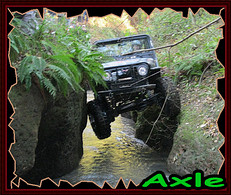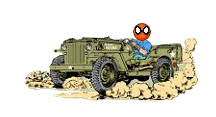Mongo is a 1975 CJ-5, 304, 3 speed, side pipes, D-44 rear, D-30 front. Manual steering, manual brakes, 4 wheel drums.
So far, the only installs I've done have been a new windshield wiper motor and switch, new speedometer/fuel gauge, a 4 inch lift, drop pitman arm, a double steering stabilizer and 35 inch super swampers.
My current project is replacing the wiring harness. This morning, I finished pulling the old one, but I had to start two other projects before I can start wiring. I needed to install a dual battery tray and the brake booster. These items had to be bolted on in order to determine where the wire loom can go across the firewall.
If you follow these instrutions, you won't be able to go backbecause you'll cut the original mounting position of the MC to such a degree that it won't bolt back in correctly.
Part one covers mounting the brake booster. Part two will cover converting a 1985 Ford E-350 van MC to use with this booster and bench bleeding the MC. Part three will cover the modification of brake lines and attaching the booster to the brake pedal.

 Help
Help



















